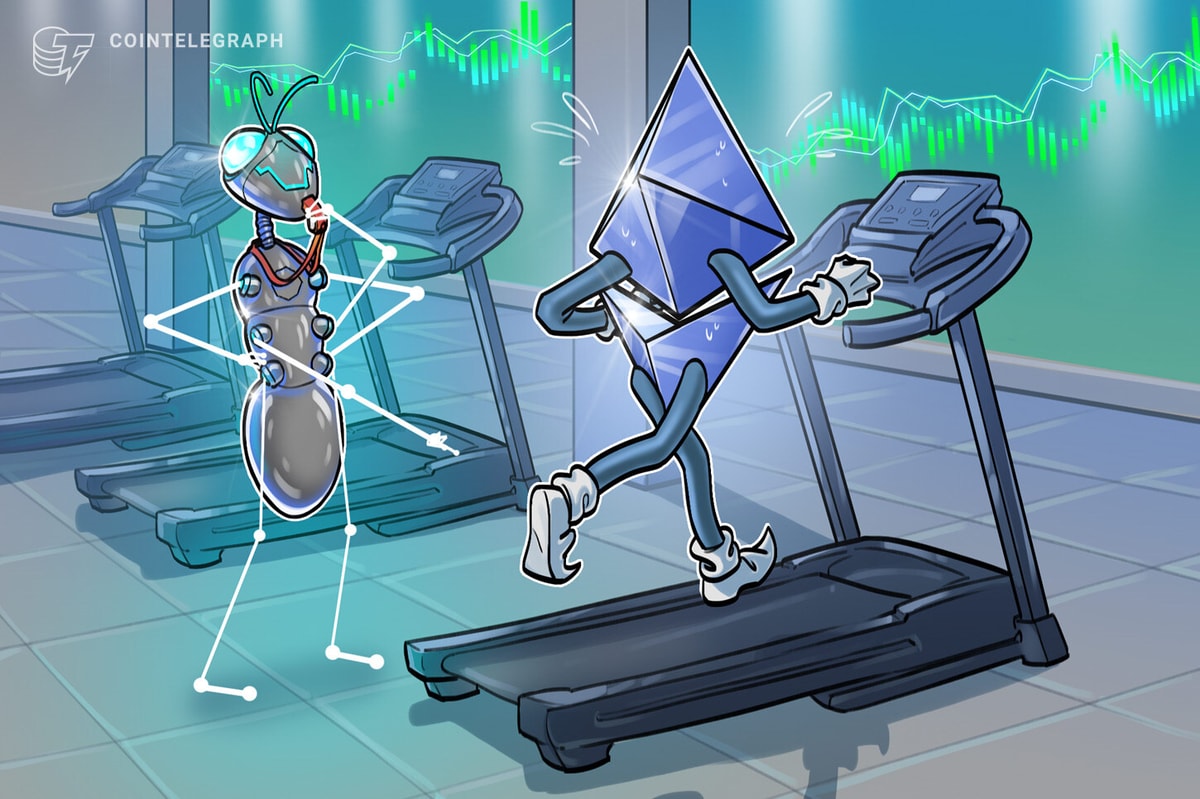How are ‘lite’ versions of crypto apps helping adoption?
6 min read
Companies become industry giants when they provide the best user experience in the simplest form possible. Google, for example, has the most advanced search engine on the whole planet. And how does it provide that sci-fi-level technology to the user? By a simple, one-line search bar.
Apple’s motto is removing the hardware from the user experience (UX) as a layer. It means that when users forget that they are holding a smartphone and browsing an app while scrolling down memory lane, Apple succeeds.
Technology needs to hit the perfect balance between utility and usability — comprehensive features and ease of use — to achieve broader adoption. Bitcoin (BTC), the original cryptocurrency, became available to a much bigger user base as it became easier and more reliable to buy BTC from user-friendly mobile apps.
For better or for worse, crypto exchanges played a pivotal role in bringing new users to the market. Millions of users saw crypto exchanges as the go-to trading platforms as the crypto apps made the overall experience more feature-packed and simplistic. Hiring Hollywood A-listers to promote them also helped crypto companies to make a case.
However, it becomes increasingly difficult to keep the interface as simplistic as, say, Google’s homepage, with more and more features introduced into crypto trading platforms. So, a number of crypto exchanges made a choice at some point. They divided their target audience — for design purposes — into newbies and pro traders and offered two different user experiences to each.
Some, like Binance and OKX, provide both UXs within the same application. First-time users are greeted with the “lite” version of the app, with fewer features and an emphasis on the learning curve of cryptocurrencies. If a user feels ready, or they were just reinstalling the app, they can tap a button to transform the app to its pro version with detailed order books, advanced commands, etc. Others went with two different versions with different layers of usability, like Bitpanda and Bitpanda Pro.
Cointelegraph reached out to crypto exchanges and UX developers to get a better understanding of how lite versions of crypto apps work and contribute to adoption.
Tech evolves by solving problems
Binance angles the lite mode of its mobile app as a simplified version of the exchange designed for users who are new to Web3, Binance head of product Mayur Kamat told Cointelegraph. “We looked at the core features that would be most beneficial for those users, and then we designed and built it with the best user experience in mind,” Kamat explained.
Binance Pro, on the other hand, is aimed at Web3 natives and traders. Kamat said that both versions are designed to provide different experiences for users in different stages of their Web3 journey. “As such, we do not compare them against each other,” he added.
When it comes to deciding on a specific platform for crypto, users look for a platform based on their needs at that point in time, according to Kamat:
“[Users’ initial pick] could be driven by education, rewards, referral, fees, liquidity, etc. But we strongly believe that over time users stay with a platform that is trustworthy.”
Technology needs to solve problems at scale for mainstream adoption, Kamat summarized. For people who care about the freedom of money, crypto means more than trading, he added, highlighting the massive crypto adoption in Turkey, Indonesia, Venezuela and Ukraine.
Simpler interface led to four million users in eight years
Bitpanda, a Europe-based fintech unicorn that offers traditional commodities trading alongside crypto, provides two apps that cater to different forms of trading. The liquidity in the beginner-friendly Bitpanda app is provided by the company itself, whereas on Bitpanda Pro, other traders provide liquidity at a price they themselves set.
Since its inception eight years ago, the base Bitpanda app onboarded almost four million investors, Magdalena Hoerhager, vice president responsible for growth at Bitpanda, told Cointelegraph.
Experienced traders, professionals, institutions and European Union-based companies, ranging from private banks to family offices, prefer Bitpanda Pro to trade assets at more competitive costs, Hoerhager claimed. The exchange offers professional trading solutions, price-matching capabilities and fully automated clearing, settlement and netting processes.
“Crypto isn’t the wild west anymore, or at least it isn’t as wild as it was five years ago,” she said, adding that the ecosystem is now seeing better regulation, better consumer protection, a better understanding of the pros and cons of cryptocurrencies as an asset class.
Lite features attract even pro users
OKX is another crypto trading platform that recently introduced a lite version — conveniently named OKX Lite. Speaking to Cointelegraph, OKX global chief marketing officer Haider Ra?que said that professional traders also see value in the lite version, switching between modes when they are not actively trading.
Traders are using the Earn feature on OKX Lite to stake their assets and earn yields passively, according to Rafique. He explained that the demo trading feature, which allows new users to try out trading tools before actually investing any real money, is an element of attraction.
Experienced traders, on the other hand, look for a broad range of investment options and advanced trading tools. Block Trading feature for example, enables institutional and high-net-worth investors to make volumed trades without adversely moving the market.
“To support the mainstream adoption of crypto, we must build trust,” Rafique said, adding that OKX is investing heavily in security and user protection. However, trust alone is not enough, he noted, “We must also o?er guidance to help newcomers navigate this new ecosystem, and OKX Lite is a big part of this.”
Apps should not assume users understand everything
Opera made headlines earlier this year when the internet browser developer launched a Web3-focused Crypto Browser. Given that its main browser — which also has crypto-friendly features — has almost 350 million users worldwide, Opera is well-positioned to introduce crypto to a mainstream audience.
Speaking to Cointelegraph, Opera Crypto Browser’s senior product manager, Danny Yao, stressed that new users want something that makes onboarding simple:
“They [new users] don’t want to be hit in the face with 1,000 options, nor do they want the app to assume they already understand everything. […] Pro users want more complex functionality, usually. That doesn’t mean they need the interface to be complicated, just that the utility needs to be present.”
Opera designed the Crypto Browser to enable interaction with decentralized apps and multiple blockchains more accessible, according to Yao. Simplifying the transition of users from Web2 to Web3 became the main goal. An integration with FIO Protocol allows Android-based Opera users to set up their own crypto handles to use as their wallet addresses, he exemplified.
One for hodlers, one for traders
BtcTurk, a Turkish crypto exchange that turns 10 next year, designed its base “lite” and “pro” apps with two different interactions in mind. The base app, BtcTurk, is intended for hodlers who believe Bitcoin is a long-term investment and want to keep it in the custody of a trusted exchange, a spokesperson told Cointelegraph. BtcTurk Pro, on the other hand, aims to meet the needs of traders who look for detailed charts, reports, indicators and more trading pairs.
BtcTurk conducted a survey with Ipsos in the summer of 2022 to look into the needs and behavior of crypto users. This research showed that trust is the first and foremost important element for the crypto ecosystem — users are looking for recognition, recommendations and ease of use when they pick a new crypto platform.
The Turkish crypto exchange believes that user-friendly apps that enable investment, transfer and payments for cryptocurrencies, as well as apps that help with new use cases per each project’s strengths, would help more people to become aware of cryptocurrencies and drive adoption.
No end product in crypto apps
Cointelegraph reached out to Altu? Gürkaynak, a user experience designer and a crypto user. He described the process of launching a new app as a neverending one. “There’s no such thing as a ‘finished’ or ‘end product’ in the world of UX,” he explained: “You keep up with the trends that are ever-changing with iterations.”
If the technology is new, however, it needs a slightly different approach. New tech with a completely new interface will result in disappointment unless there’s something truly extraordinary, Gürkaynak warned. New users need time to adapt to the technology itself, so applications need some familiar screens as a basis.
Making a simple app that users are likely to recommend to others is the most important, he noted:
“Prioritizing the word-of-mouth impact instead of a groundbreaking design would help crypto apps (or any apps for that matter) to drive more adoption.”







